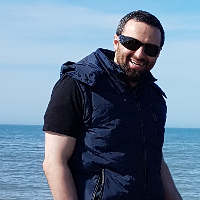Estimating soil sand content in Mazandaran province using proximal sensing technology
Soil is considered to be dynamic and complex both spatially and temporally and thus, many physical, chemical and biological properties should be determined before assessing its quality. To reach this purpose, a large sample must be collected for laboratory tests which is both time-consuming and costly and requires lots of attention and precision. Compared to other components of soil, sand is closely related with the quality of soil and crop growth. Therefore, environmental modeling and digital soil mapping projects should pay special attention to this part of soil texture. However, large-scale detection, mapping and monitoring of sand content using common traditional sampling and usual laboratory analytical procedures are both time-consuming and costly due to the vast spatial variability of sand. Compared to laboratory-based and field spectroscopy, spaceborne and airborne remote sensing have a lower level of accuracy due to atmospheric effects, compositional and structural effects, lower spatial and spectral resolution, geometric distortions and spectral mixing. Hence, an appropriate technology is required to overcome these imperfections and study spatially variable factors. Lab Diffuse reflectance Spectroscopy (LDRS) which utilizes fundamental vibration, overtones and a combination of functional groups has been introduced as a promising tool for soil investigation. The present research uses proximal soil sensing technology to study sand content.
128 samples were collected from a soil depth of 20cm in accordance with stratified randomized sampling method and supplementary data (geology, pedology, land use, etc.). The samples were then divided into two subsets: calibration subset with 96 and validation subset with 32 samples. Afterward, definitive calibration model was developed and reviewed with two & four latent variables in accordance with R, R2, RMSE, RPD and RPIQ indices using multivariate regression analysis-PLSR method, LOOCV cross-validation technique and preprocessing algorithms such as spectral averaging (spectral reduction method), smoothing and 1st derivative (Savitzky-Golay algorithm).
Results & Discussion:
The estimating model indicated that out of the seven latent variables, the first two and four variables can provide the best estimate of the volume of sand in 96 calibration samples and the 32 validation subset. Since more than 60% of the variance of sand variable and 95% of the variance of spectral variables can be concentrated in these selected factors, the predicting model was calibrated based on the first four LVs and the full LOOCV procedure. The best model was calibrated with these features: Rc=0.76, R2C=0.57, RMSEc= 9.77 and SEc of about 9.82. The correlation coefficients (R) between sand contents and the effective spectral bands were calculated and equaled UV-390nm= 0.46, Vis-510 to 540nm about 0.53, 680 to 690 about 0.55, NIR- 950 to 970 about 0.67 and 1100nm= 0.70, SWIR- 1410 nm=0.76, 1860 to 1900 about 0.76, 2180 to 2220 about 0.77 indicating that the selected spectral bands (spectral ranges) with the maximum R contents were the most effective independent predictors in the present modeling process. Furthermore, the most influential spectral domains in the modeling process were determined as follows: UV-390 nm, Vis-440-540 nm, NIR- 740-990 nm, SWIR- 1430-1890, 1930, 2190-2240, 2330-2440 nm which was in agreement with previous studies. The quality of the calibrated sand predicting model was evaluated with Hotelling, Adjusted leverage and residual variances tests. The model was validated based on 32 independent samples. General characteristics of the validation process for LV=4 were Rp= 0.82, R2p= 0.67, RMSEp= 8.83, SEp= 8.92 and bias= -0.93 and Rp= 0.83, R2p= 0.68, RMSEp= 8.68, SEp= 8.72 and bias= -1.26 for LV=2.
Results indicate that the final model was capable of predicting sand contents and thus for two factors (LV=2): RPDc= 1.51, RPIQc= 2.44, RPDp= 1.78 and RPIQp= 2.45 were obtained while for four factors (LV=4): RPDc= 1.54, RPIQc= 2.48, RPDp= 1.75 and RPIQp= 2.41 were reached. A RPIQ of more than 2 shows that the model is capable of estimating soil sand content in Mazandaran province using data collected through diffuse reflectance spectroscopy. Since a new generation of hyperspectral remote sensors with high spectral resolution is now available, results of the present study can be the starting point for more accurate mapping of sand particles in soil texture using RS platforms. However, proximal spectroscopy must be more thoroughly investigated. Determining and detecting the key wavelengths in the modeling process can enhance the upscaling operation and the new airborne/satellite hyperspectral sensors and thus result in more precise mapping of the soil texture. Finally, the VNIR-DRS technology was proved to be potentially capable of estimating soil sand content in Mazandaran province. The present model and key spectral domains identified in the present study can make a basis for future studies investigating the sand content in very large-scale samples using airborne/satellite hyperspectral data. This shows the importance of LDRS and its role in identifying optical wavelengths which will be used in space-borne data (upscaling process).
- حق عضویت دریافتی صرف حمایت از نشریات عضو و نگهداری، تکمیل و توسعه مگیران میشود.
- پرداخت حق اشتراک و دانلود مقالات اجازه بازنشر آن در سایر رسانههای چاپی و دیجیتال را به کاربر نمیدهد.



